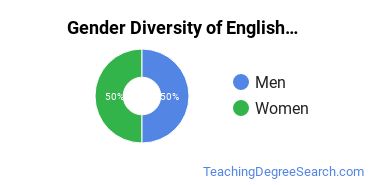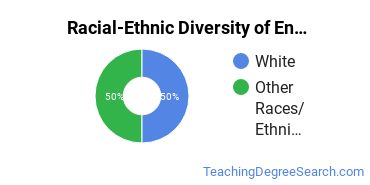English & Language Arts Education at University of North Georgia
What traits are you looking for in a english & language arts education school? To help you decide if University of North Georgia is right for you, we've gathered the following information about the school's english & language arts education program.UNG is located in Dahlonega, Georgia and approximately 19,793 students attend the school each year.
Want to know more about the career opportunities in this field? Check out the Careers in English & Language Arts Education section at the bottom of this page.
UNG English & Language Arts Education Degrees Available
- Master’s Degree in English & Language Arts Education
UNG English & Language Arts Education Rankings
English & Language Arts Education Student Demographics at UNG
Take a look at the following statistics related to the make-up of the english & language arts education majors at University of North Georgia.
UNG English & Language Arts Education Master’s Program

The following table and chart show the race/ethnicity for students who recently graduated from University of North Georgia with a master's in english & language arts education.

| Race/Ethnicity | Number of Students |
|---|---|
| Asian | 0 |
| Black or African American | 0 |
| Hispanic or Latino | 0 |
| White | 1 |
| International Students | 0 |
| Other Races/Ethnicities | 0 |
Related Majors
- Mathematics Education
- Physical Education Teaching & Coaching
- Social Science Teacher Education
- Art Education
Careers That English & Language Arts Education Grads May Go Into
A degree in english & language arts education can lead to the following careers. Since job numbers and average salaries can vary by geographic location, we have only included the numbers for GA, the home state for University of North Georgia.
| Occupation | Jobs in GA | Average Salary in GA |
|---|---|---|
| High School Teachers | 27,620 | $58,050 |
| Middle School Teachers | 24,530 | $58,190 |
| Education Professors | 1,530 | $83,270 |
| English Language and Literature Professors | 1,160 | $71,190 |
References
*The racial-ethnic minorities count is calculated by taking the total number of students and subtracting white students, international students, and students whose race/ethnicity was unknown. This number is then divided by the total number of students at the school to obtain the racial-ethnic minorities percentage.
More about our data sources and methodologies.
